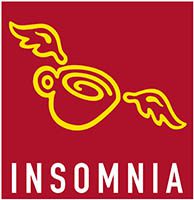Small changes that make a big difference
In this series of posts about workforce management we’re now moving on from recruitment and onboarding to managing your current team.
Here too, small changes can have a big effect. A few tweaks to your scheduling may only deliver a small benefit on a daily basis, but over the course of a year it could have a big impact on your bottom line.
Part 4: Employee Scheduling: Getting The Right Balance
There are two aspects to employee rostering: the routine and the strategic. The key to saving money is making the routine of scheduling staff, and subsequently tweaking schedules, easy and intuitive. This helps ensure you and your managers get the visibility of what is going on in your business. This then leads to an understanding (the strategic), so you can make smart decisions on your schedule.
The trick is to deploy as few staff as possible, and as many as are necessary. It is quite a tough balancing act. Do labour patterns match sales patterns? It is worth taking time to identify the reasons why things go quiet. Businesses that do a lot of lunchtime takeaway business for office staff may, for example, find that things are quieter on a Friday, perhaps because customers leave early for the weekend, or go for a sit-down meal with colleagues?
Too many staff can be worse than too few. As the saying goes, “the devil makes work for idle hands”.
- As employees slow down, poor work habits and attitudes are likely to develop.
- Unneeded staff may distract those who do have tasks to get on with.
- And if there is no sense of urgency serving customers, it will give the impression that your company is indifferent and sloppy.
- Last but not least, it is demotivating for the employees themselves, watching the clock creeping agonisingly slowly towards knocking-off time!
Nevertheless, it is almost inevitable that you will have slack periods. How can you make sure that the time is used productively, always? You could, for example, get employees to prepare simple dishes or sandwiches that you currently purchase pre-made.
And of course, you could get customer service staff to help out with tasks such as stock management and cleaning during slack periods.
Look carefully at start and finish times and stagger the roster accordingly. Do you really need so many staff early in the morning, when business is slow? Small adjustments can cut your annual labour costs significantly.
When Gerard originally envisaged Bizimply he had both the “routine” and the “strategic” in mind, and we have never strayed from that guiding vision.
First, our solution greatly simplifies the process of setting up the schedules – you just drag and drop staff names into the open time slots. This will typically save two or three hours of a manager’s precious time. Then you can communicate schedules to all staff members at the click of a button.
Second, Bizimply gives you the insight you need to take the kind of decisions we discuss here, which will boost your profitability.
Whether you are an existing customer or somebody considering moving to Bizimply we will happily provide you with a consultation to help improve your schedules.
Next time we’ll look at scheduling through the other end of the telescope: how to cope better when staff are overstretched.









